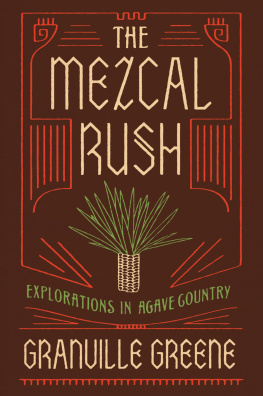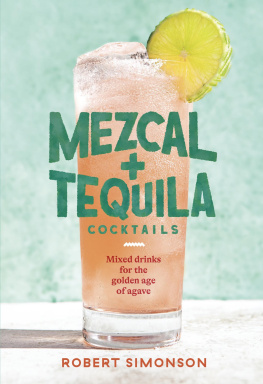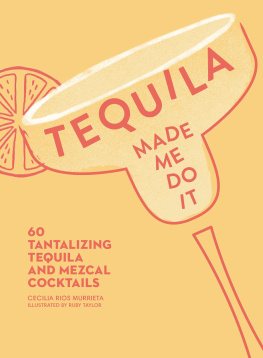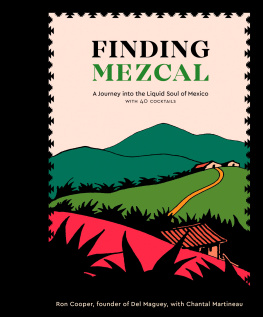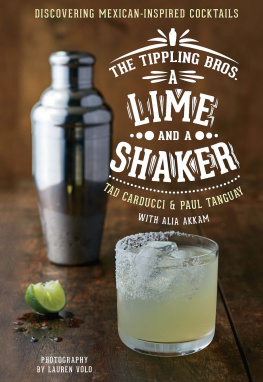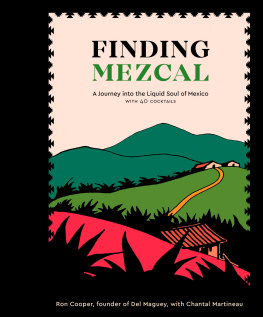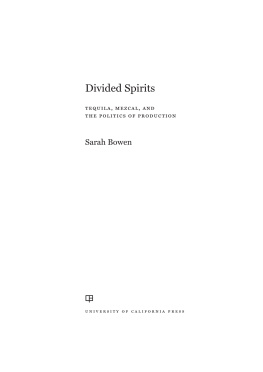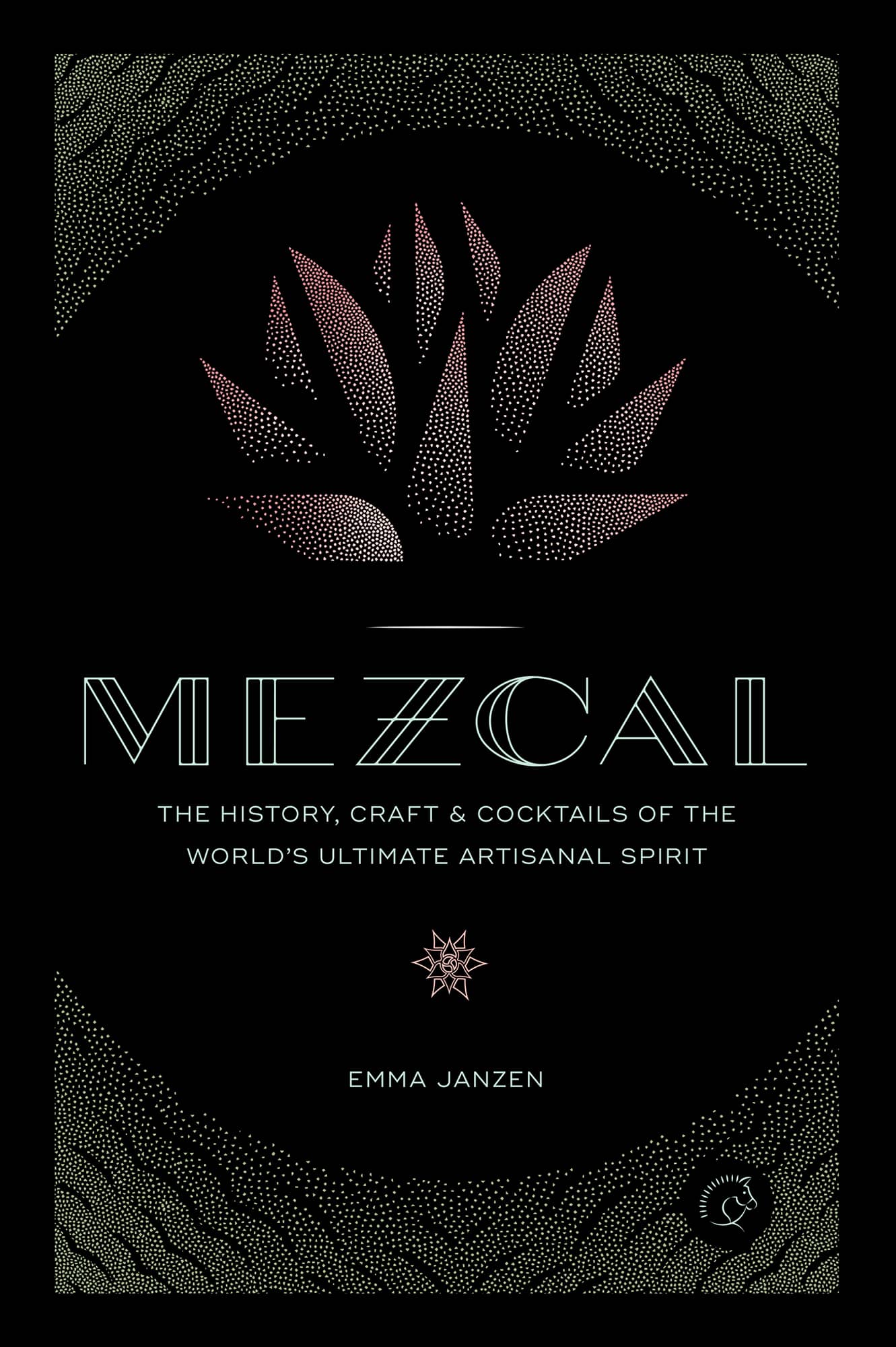MEZCAL
THE HISTORY, CRAFT & COCKTAILS OF THE WORLDS ULTIMATE ARTISANAL SPIRIT
EMMA JANZEN


AN INTRODUCTION

MEZCAL IS THE MOST COMPLEX SPIRIT IN THE WORLD.
I know; it sounds trite. Its oversimplified. Its lacking a certain panache that many others will spout when talking about mezcal. But its always the first refrain on everyones lipsan incantation thats been repeated to me so frequently throughout the years Ive spent getting to know the spirit that its firmly tattooed in my consciousness. Now that Im deeply invested, I cant imagine a better way to describe it.
Everything about Mexicos indigenous spiritfrom the biological diversity of the raw material that goes into it to the tiny differences in the way the liquor is produced by different distillers and the expressive flavors that emerge as a resultwill stop the average spirits lover in their tracks with its mind-boggling level of sheer nuance and complexity.
Maybe youve heard mezcal described as bottom-shelf rotgut, as people like to say. Maybe you know it as tequilas mysterious, smoky cousin, a phrase I admit to regurgitating in my first article on the spirit published back in 2010. Id like to put a stop to both frames of reference. Yes, mezcal often has a smoky element to its flavor. Yes, in the last fifty years or so, the mezcal industry has been dominated by mass-produced swill, so its easy to find liquid made with god knows what added to the distillate and decorated with a deceased red agave worm. But this kind of mezcal is not the delicious and culturally rich spirit thats been simmering under the surface throughout Mexico for centuries. Its not the mezcal that were seeing crawl back into the light today.
So lets forget about the mezcal with the poor reputation for now and open our minds to its predecessor: a spirit with a rich cultural heritage and absolutely stunning flavor thats unmatched in the world of distillation.
Its easy to wax poetic about it because the agave spirit has a captivating and storied history. It has weaved through the fabric of Mexican culture for centuries, with some scientists dating evidence of first distillation to Mesoamerican times. Its rustic, humble, brazen, fiery, and romantic all at the same time. Historically, special mezcals have been made to celebrate the births of children, offered to sanctify marriages, and poured to commemorate the dead at funerals. In some communities, it has been used as medicine, to heal the body and the soul. In others, it has been consumed ritualistically, to symbolize fertility and encourage the return of each rainy season to ensure a blessed crop to come.
So how did we get to the crappy bottle with the worm? As indigenous communities evolved and modernized, the spirits relevance and ritual diminished. In an Artes de Mxico essay titled Of Wisdom and Eternity, poet Fausto Rasero writes: Banned during colonial times for its connection to pagan festivals and its interference with brandy and wine imports from Spain, mezcal was only recently able to shed the stigma of its illicit, humble origins. The old ways of production werent totally wiped out, thoughand thats key to our story today. The small-format, community-centric model has survived the whole time; its just been operating on the fringes of our agave consciousness. Now the small, traditional outfits are finding their day in the sun again, and here in America, were starting to see an increase in great quality mezcals.
In the larger scheme of global spirits, mezcal is still a speck on the map. In 2015, only 2.4 million liters were produced, compared with tequilas 228.5 million. The spirit only captures 0.03 percent of the global market. But its growth is impressive; production more than doubled from 2011 to 2016, and as of 2015, producers were shipping cases to forty-eight countries around the world. The trajectory will only keep growing from here.
Because cultural heritage is at stake, its important to keep tabs on which producers are making mezcal in an honorable fashion and which ones are out to make a quick buck as the category stretches (more on this later). Its also important to keep in mind that the spirits mysticism isnt the only thing at stake moving forward. The recent resurgence of artisanal and traditional mezcal also represents a piece of the puzzle thats helping Mexicos economy grow.
When I was in Oaxaca in 2016, I traveled to several of the Mezcal Vago palenques, or distilleries, located in remote regions of the state. I first wrote about Vago when the company launched in the States back in 2013, and the heart-warming backstory has stuck with me since, so I wanted to visit the source and see where the magic happens. In its most simplified version, the narrative of the brand goes like this: Judah Kuper, Colorado surf and ski bum, is traveling around the Mexican coast and lands in the hospital with an earache. There, he meets the woman of his dreams, the lovely Valentina, who happens to come from a family that makes mezcal. The two end up marrying, and Judah decides to export the mezcal to America. Why not share the beautiful liquid and rich culture of his adopted family with his compatriots? Now, thanks to the success of the business, many members of Valentinas family make mezcal full-time, as a primary source of income.
MEZCAL SALES IN THE UNITED STATES GREW BY NEARLY 48 PERCENT BETWEEN 2007 AND 2011, AND EXPLODED FROM A $10 MILLION INDUSTRY IN 2005 TO $126 MILLION IN 2015.
On the speed-bump-riddled road from Oaxaca City to Sola de Vega, Mezcal Vago brand and operations manager Francisco Terrazas asked me what kinds of questions I wanted him to translate for maestro Salomn Rey Rodriguez during our visit. I said I was interested in his philosophy. Why make mezcal? Many producers have said now is the time to get in the game before the industry overcrowds. Others ramble on about the spirituality and romanticism. They spout the myth of Mayahuel and her four hundred rabbits.
Terrazas says that for To Rey, the spirituality isnt necessarily in the mezcal itself, but rather in the fact that he gets to make the spirit for a living. Thats the blessing: the act of making it. Im not trying to shit on any romantic ideal of mezcal, he explained, but to really get it, I think you have to realize the pragmatic reality and combine that with your appreciation of the spirit. Thats truly the only way to understand where mezcal is right now.
That notion of balance stayed with me throughout the course of writing this book. Mezcal is spiritual and cultural and historic, but at the end of the day its important because the profits put food on the table. Some of these producers dont own closed-toed shoes. Others barely have a roof over their heads. Demand means new jobs; its why natives are able to stay in their country instead of leaving to find work in the States and why many immigrants are moving back to Mexico to carry on the traditions of their people. The blessing isnt always the mezcal itself, but the act of making it.


